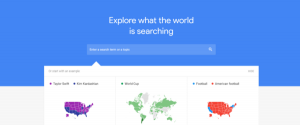
A third of online shoppers have purchased goods from another country. Those living in Australia, Canada and Russia are the most likely to buy internationally. In Asia and India –– two of the fastest growing markets for ecommerce, with YoY growth in the 30 or more percentile –– marketplaces similar to Amazon and eBay make it easy for international companies to test product market fit.
Now, how do you bring those customers back to your site for purchase once you’ve determined demand? Many online stores find international shipping nearly impossible given the regulations, rules and risks associated with each country.
To overcome that initial fear of international shipping, it is important to know what shipping options and fulfillment services provide low costs and risk.
Once you have a clear understanding of how international shipping works, researched the services that best fit your company and put an international shipping strategy in place, you will be able to open your online storefront to a global audience and break into the global market.
Initial Assessment

Shipping internationally opens your market to a potential three billion consumers. But, before you build your international shipping strategy you should determine if it is right for you. You don’t want to put time, effort and money into this if you aren’t going to come out with profit.
Here are a few things that come into play.
Is my product suitable for international shipping?
Know what it takes to ship your products out of the country –– or if those products are even suitable for such long distance shipping. Ideally, you ship items that are sturdy and compact to avoid an item breaking in transit, which can leave a bad customer impression.
If you are shipping perishable goods or large items, you may want to keep these items solely available to your domestic customers.
It is also important to be aware of any import and/or export restrictions subjected to the product and specific countries. Here’s a short list of items prohibited from international shipping:
- Aerosols
- Air Bags
- Alcoholic Beverages
- Ammunition
- Cigarettes
- Dry Ice
- Explosives
- Fresh Fruits and Vegetables
- Gasoline
- Nail Polish
- Perfumes (containing alcohol)
- Poison
This should not stop you from shipping internationally altogether and we’ll go over how you can restrict items from shipping to certain destinations in a bit.
Is there demand for my product?
Do the research! It is pretty easy to determine if there is demand for your product if you have already had requests from international customers. But, if you don’t have the luxury of knowing who already wants your products, you should look into what is currently being offered in countries you want to ship to. Try to find out if there are similar products being sold and what the competitors are doing.
In the same way you’ve built your national audience, you’ll want to access the competition and get your goods in front of your target audience. But, international consumers shop differently than you are used to. In Asia, for instance, Rakuten outpaces Amazon. If your goods sell well in the U.S. on Amazon, consider placing your product on Rakuten to test out market fit and demand.
Here are larger international marketplaces to keep your eye on as you expand. These are great places to test out your product offering before launching a site-wide campaign targeted to international customers.
- Rakuten: Asia, especially Japan, though the company is expanding outside of Asia as well, B2C marketplace
- Alibaba: Asia, China in particular, B2B marketplace
- Taobao: Asia, China in particular, B2C marketplace (the B2C side of Alibaba)
- Snapdeal: India, B2C marketplace
- Flipkart: India, B2C marketplace
- Amazon India: India, B2C marketplace
- Mercado Libre: Latin America, B2C marketplace
Choosing the Right Service

Shipping internationally comes with its own obstacles and you should do your research before opening your gate to the world. Some important factors such as shipping costs, tracking, delivery times and guarantees will come into play when you are looking into services. One service does not fit all. Know what international shipping service is the best fit for you and your customers’ needs.
Here is what to think through.
International Carriers
This could be a good choice for smaller companies because you will have the backing of a large company such as UPS, FedEx and DHL. These companies have years of experience in shipping both internationally and domestically.
With international carriers you will experience a higher level of international shipping services as they offer door to door tracking and guarantees in pricing. Since they are a larger company, their prices tend to start out higher, but there are options for negotiation.
National Carriers
This is the in-between option of international carriers and international freight forwarders. National carriers, such as USPS, Australia Post and Canada Post, focus on servicing a specific country. These companies normally offer lower prices than international carriers but you won’t have the detailed door-to-door tracking that you will find with the other carrier services.
International Freight Forwarders
An international freight forwarder manages your shipment from beginning to end. This is a good option for merchants with a larger shipping budget as the prices are slightly higher than international and national carriers.
This service will make breaking into the global market a little easier, and is is just about as simple as if you were shipping domestically. You send the package to the international freight forwarder’s hub and they take care of preparing and processing customs and other documentation involved in shipping internationally.
The following international freight forwarders (or 3PLs) are considered best-in-class, with the highest number of customers and revenue:
- DHL Supply Chain & Global Forwarding
- Kuehne + Nagel
- DB Schenker Logistics
- UPS Supply Chain Solutions
- Kintetsu World Express
- Panalpina
- Expeditors
- Nippon Express
- SDV (Bollore Group)
- Hellmann Worldwide Logistics
Know the Terminology

No matter what route you take when choosing a service for your international shipments, it helps to know some of the terminology so you can have educated conversations with carriers. Here are some key terms you should know to ensure you keep your new global customers satisfied and avoid any unwanted surprises –– for you or your customer.
Harmonized Tariff Code
Each of your products will have a harmonized tariff code which is required when preparing your commercial documents. This code indicates the description of the product and is legally required in many countries.
If you fail to put the correct code for a product, your shipment can be delayed or could result in higher duty and taxes. If you are unsure what code goes with a certain product, you can use the HTS search here to figure it out.
Customs Documentation
You will be required to complete documents for your international shipments. The set of documents you need to complete are dependent on the details of your shipment. These documents include:
- Commercial invoice: The commercial invoice determines the true value of the product you are shipping and is used when calculating the duties and taxes. This is completed by the exporter and is required by the foreign buyer to prove ownership and arrange for payment.
- Export declaration: The export declaration is a form that provides information on amount, nature and value of your product to the statistical office for compilation of foreign trade data and serves as an export control document.
- Certificate of origin: The certificate of origin is an official document authenticating what country a shipment has come from and is prepared by the exporter.
Duties and Taxes
Duties and taxes are imposed by the country importing the shipment to generate revenue and protect local industries against foreign competition. These are usually paid before the goods are released from customs and are based on product value, trade agreements, country of manufacture, use of the product and the product’s harmonized system code.
These fees can be paid by the customer (delivery duty unpaid), or the merchant (delivery duty paid). It is important to know the difference between the two before you make your first shipment as you don’t want to unknowingly leave your customer with additional fees when they receive their package.
- With delivery duty paid (DDP), you as the merchant are responsible for paying all duties and taxes. This includes all costs from your warehouse to the end destination such as transportation, customs clearance and handling expenses. The delivery duty will be paid by the carrier and that bill will be sent to you. If you have the means to do this, it is a much better option as it results in a richer experience for the customer.
- In contrast, deliver duty unpaid (DDU) requires payment from the recipient. You will still be responsible for transportation costs, but the customer is then responsible for paying the duty and other clearing expenses upon arrival. If the customer is not made aware of this before hand, it can lead to a sticky situation and a very unhappy customer. If you use this method, be clear on product pages that this is the case. Do not wait until after shipment to alert the customer.
Beware of Restrictions

You may find that some of your products are legally restricted from being imported to certain countries or it can even be illegal to export the product from your country. You wouldn’t believe some of the items we have found to be restricted from certain locations!
It is important to remember that customs has the right to stop the shipment of any package.
Don’t let this scare you off from breaking into the global market. You will just need to make sure you take these restrictions into account when you begin strategizing the shipping methods and options you want to use.
You can carry out these restrictions by using options embedded into your platform. For instance, use customer groups to allow shoppers from various countries to buy only those products you know you can export. This give you more control over the product offerings you display for those groups –– and allows you to collect email addresses to better market to that segment.
For a more sophisticated option, look into using a shipping rate management software. These programs will automatically take into account a customer’s final shipping destination and alert them to issues with any items in their cart based on their location, or updated shipping prices (including DDU, if applicable) on the checkout page.
Either way, you will need to have the ability to enable restrictions for products based on origin and destination of shipments in order to scale your international selling.
Conclusion
Breaking into the global market can seem a bit overwhelming, but once you take the leap, you’ll open your business up to a larger purchasing audience, significantly increasing your sales and revenue. There is a whole world out there potentially searching for your products. With a few steps and a smart strategy, you can be there to answer their search.
Business & Finance Articles on Business 2 Community(37)







